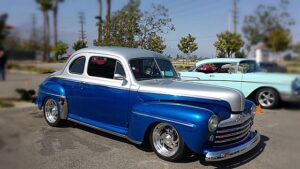Introduction
When it comes to maintaining your vehicle’s braking system, replacing worn-out brake pads is a common task. However, what happens if you put new brake pads on grooved rotors? This article will delve into the potential consequences and effects of installing new brake pads on grooved rotors.
Understanding Grooved Rotors
Before discussing the impact of installing new brake pads on grooved rotors, it’s essential to understand what grooved rotors are. Grooved rotors, also known as slotted or cross-drilled rotors, have channels or slots machined into their surface. These grooves serve several purposes, including improving brake performance by dissipating heat and preventing the buildup of gases and debris.
The Purpose of Brake Pads
Brake pads are a crucial component of the braking system. They are designed to create friction against the rotors, converting the kinetic energy of the moving vehicle into heat energy. This friction is what slows down and stops the vehicle. Brake pads are typically made of a composite material that includes friction materials like organic compounds, semi-metallic compounds, or ceramic compounds.
The Impact of New Brake Pads on Grooved Rotors
Installing new brake pads on grooved rotors can have both positive and negative effects, depending on various factors. Let’s explore them in more detail:
Positive Effects: When new brake pads are installed on grooved rotors, the grooves can help improve the overall braking performance. The grooves aid in dissipating heat generated during braking, reducing the risk of brake fade. Additionally, the grooves can help prevent the buildup of gases and debris, allowing the brake pads to maintain consistent contact with the rotor surface.
Negative Effects: However, there can be some negative consequences as well. The grooves on the rotors may cause uneven wear on the new brake pads. As the pads make contact with the grooved surface, they may wear down more quickly in certain areas, leading to an uneven pad surface. This uneven wear can result in reduced braking efficiency and increased noise or vibrations during braking. Additionally, the grooves may increase the chances of brake squeal or brake dust accumulation.
Considerations and Recommendations
To mitigate the potential negative effects of installing new brake pads on grooved rotors, it is important to consider a few factors:
Pad Material: The choice of brake pad material can influence the interaction with grooved rotors. Some brake pad materials may be more resistant to uneven wear caused by the grooves, while others may wear down faster. It is advisable to consult with a professional or refer to the manufacturer’s recommendations to select the appropriate brake pad material for grooved rotors.
Rotors Condition: The condition of the grooved rotors is also crucial. If the grooves are excessively worn or damaged, it is recommended to have the rotors resurfaced or replaced before installing new brake pads. This ensures a smooth and even surface for the pads to make contact with, reducing the risk of uneven wear.
Professional Advice: If you are uncertain about the compatibility of new brake pads with grooved rotors or any other aspect of your vehicle’s braking system, it is always best to seek professional advice. A qualified mechanic or automotive specialist can provide guidance tailored to your specific vehicle and driving conditions.
Conclusion
In conclusion, installing new brake pads on grooved rotors can have both positive and negative effects. While the grooves can enhance braking performance by dissipating heat and preventing debris buildup, they can also lead to uneven wear and potential noise or vibrations. Considering factors such as pad material and rotor condition, as well as seeking professional advice, can help mitigate any potential negative consequences.
References
– Brake & Front End Magazine: www.brakeandfrontend.com
– Car Bibles: www.carbibles.com
– Popular Mechanics: www.popularmechanics.com












